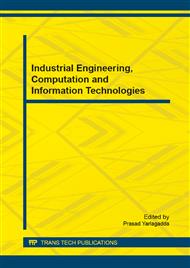p.3
p.8
p.13
p.18
p.24
p.30
p.36
p.40
A Novel Weighted Distance KNN Algorithm Based on Instances Condensing
Abstract:
As a nonparametric classification algorithm, K-Nearest Neighbor (KNN) is very efficient and can be easily realized. However, for large dataset, the computational demands for classifying instances using KNN can be expensive. A way to solve this problem is through the condensing approach. It means we remove instances that will bring computational burden but do not contribute to better classification accuracy. This paper proposes a novel weighted distance KNN algorithm based on instances condensing algorithm. The proposed idea is to extract some representative instances and take the processed result as a new training sample set. Meanwhile, use the distance-weighted WDKNN algorithm to improve the prediction accuracy, our experiments show that the proposed strategy can dramatically shorten the time consumption compared with the traditional KNN. On average, the speedup ratios improve 90% while classification accuracy only has 2% decreases.
Info:
Periodical:
Pages:
8-12
Citation:
Online since:
December 2014
Authors:
Keywords:
Price:
Сopyright:
© 2015 Trans Tech Publications Ltd. All Rights Reserved
Share:
Citation:


